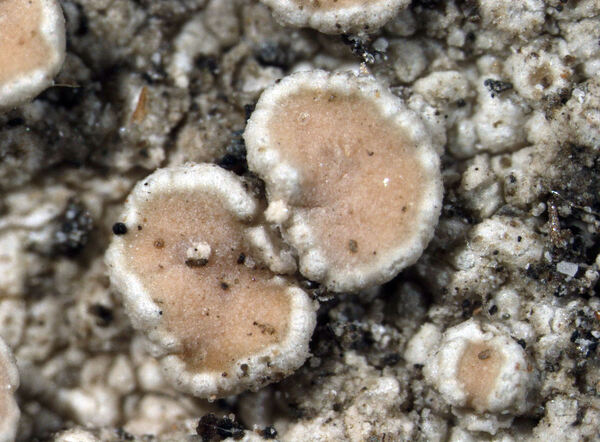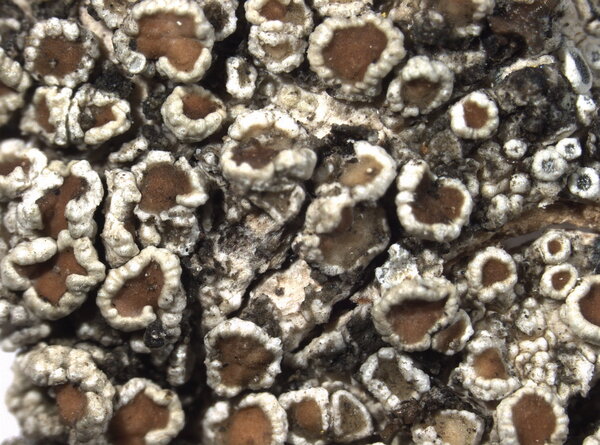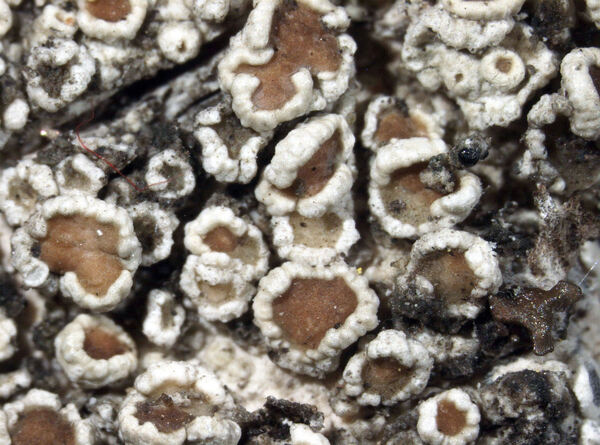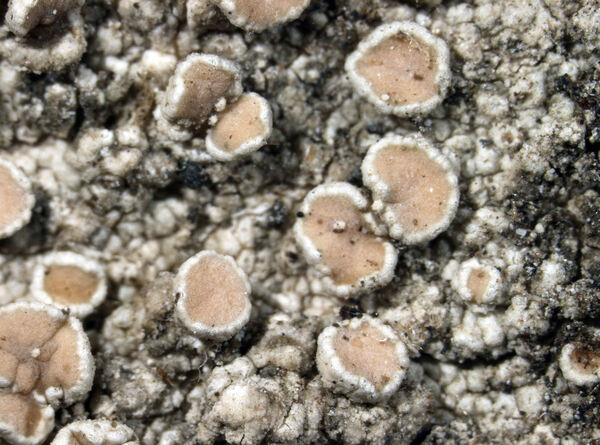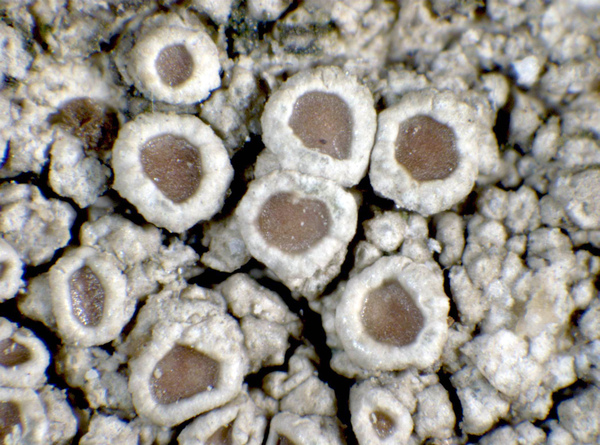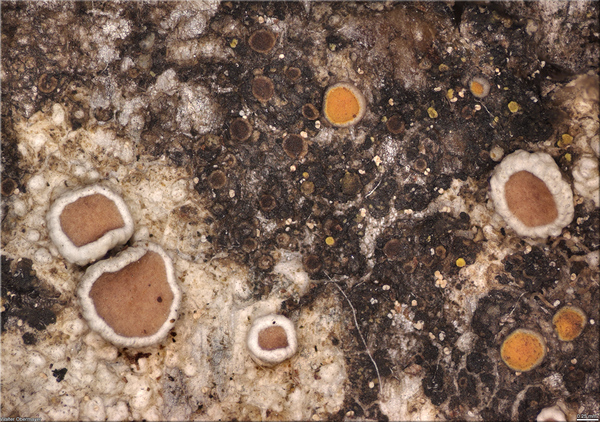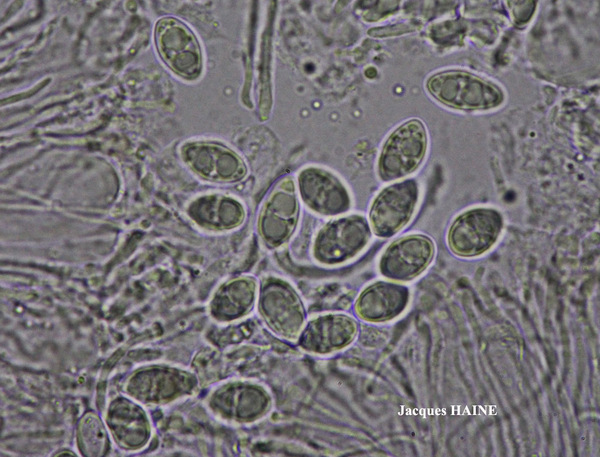Lecanora chlarotera Nyl.
Bull. Soc. Linn. Normandie, sér. 2, 6: 274, 1872.
Synonyms: Lecanora chlarotera f. rugosella (Zahlbr.) Poelt; Lecanora crassula H. Magn.; Lecanora istriana Zahlbr.; Lecanora rugosella Zahlbr.; Lecanora subfusca var. alboflavescens A. Massal.
Distribution: N - VG (Castello 1996, 2002 Carvalho 1997, Martellos & Castello 2004, Castello & Skert 2005), Frl (Badin & Nimis 1996, Castello & Skert 2005, Bernini & al. 2010), Ven (Nimis & al. 1996c, Nascimbene & Caniglia 1997, 2002c, 2003c, Lazzarin 1997, 2000, 2000b, Caniglia & al. 1999, Nascimbene 2005c, 2008, 2008c, Nascimbene & al. 2005b, 2006, 2007, 2013b, 2015, Thor & Nascimbene 2007, Nascimbene & Marini 2007, 2010, Cristofolini & al. 2008), TAA (Nascimbene 2003, 2005b, 2006c, 2014, Nascimbene & al. 2006e, 2007b, 2014, 2022, Zarabska & al. 2009, Nascimbene & Marini 2015, Nimis & al. 2015, Trindade & al. 2021), Lomb (Arosio & Rinaldi 1995, Valcuvia & Gianatti 1995, Brusoni & al. 1997, Zocchi & al. 1997, Roella 1999, Brusoni & Valcuvia 2000, Chiappetta & al. 2005, Arosio & al. 2000, 2003, Valcuvia & al. 2003, Dalle Vedove & al. 2004, Anderi & al. 2005, Valcuvia & Truzzi 2007b, Furlanetto 2010, Brackel 2013, Gheza & al. 2015, 2020, 2022b, 2023), Piem (Caniglia & al. 1992, Morisi & Sereno 1995, Arosio & al. 1998, Isocrono & Falletti 1999, Piervittori & al. 2001, Griselli & al. 2003, Piervittori 2003, Castino 2004, Isocrono & al. 2004, 2005b, 2006, 2007, 2009, Isocrono & Piervittori 2008, Furlanetto 2010, Matteucci & al. 2010, Giordani & Malaspina 2016), VA (Piervittori & Maffei 1996, 2001, Piervittori & Isocrono 1999, Valcuvia & al. 2000b, Matteucci & al. 2008c, Ongaro & al. 2022), Emil (Bassi 1995, Gasparo & Tretiach 1996, Nimis & al. 1996, Valcuvia & Grieco 1995, Tretiach 1997, Valcuvia & Savino 2000, Dalle Vedove & al. 2002, Sallese 2003, Morselli & Regazzi 2006, Tretiach & al. 2008, Cioffi 2009, Benesperi 2009, Malavasi 2014, Gerdol & al. 2014, Brackel 2015, 2025, Fariselli & al. 2020), Lig (Castello & al. 1994, Brunialti & al. 1999, Putortì & al. 1999b, Valcuvia & al. 2000, Giordani & al. 2001, 2002, 2025, Brunialti & Giordani 2003, Giordani 2006, Giordani & Incerti 2008). C - Tosc (Tretiach & Nimis 1994, Loppi & Putortì 1995, 1995b, 2001, Loppi & al. 1994, 1995, 1996b, 1996c, 1997, 1997b, 1997e, 1998, 1998b, 1999a, 2002, 2002b, 2002c, 2003, 2004, 2004c, 2006, Loppi 1996, 1996b, Loppi & De Dominicis 1996, 1996b, Monaci & al. 1997, Loppi & Nascimbene 1998, 2010, Putortì & al. 1998, Tretiach & Ganis 1999, Putortì & Loppi 1999, 1999b, Loppi & Pirintsos 2000, Senese & Critelli 2000, Benesperi 2000a, 2006, 2011, Paoli & Loppi 2001, 2008, Lorenzini & al. 2003, Landi & Loppi 2003, Loppi & Frati 2004, Frati & al. 2006b, 2007, 2008, Stofer 2006, Benesperi & al. 2007, 2013, Laganà & al. 2002, Lastrucci & al. 2009, Brunialti & Frati 2010, Brunialti & al. 2012b, Paoli & al. 2012, 2012b, 2013, 2015d, Brackel 2015, 2025, Nascimbene & al. 2015, Frati & Brunialti 2023, Fačkovcová & al. 2024), Marc (Nimis & Tretiach 1999, Frati & Brunialti 2006, Brackel 2015), Umb (Ravera 1998, Nimis & Tretiach 1999, Panfili 2000b, 2007, Ravera & al. 2006, Brackel 2015), Laz (Bartoli & al. 1997, Ravera 2002, 2008b, Massari & Ravera 2002, Nimis & Tretiach 2004, Ruisi & al. 2005, Stofer 2006, Munzi & al. 2007, Ravera & Genovesi 2008, Zucconi & al. 2013, Brackel 2015), Abr (Recchia & al. 1993, Olivieri & Pacioni 1996, Olivieri & al. 1997, 1997b, Loppi & al. 1999, Nimis & Tretiach 1999, Stofer 2006, Brackel 2015, Caporale & al. 2016, Corona & al. 2016, Di Nuzzo & al. 2021, Gheza & al. 2021, Vallese & al. 2022), Mol (Nimis & Tretiach 1999, Caporale & al. 2008, Ravera & al. 2010, Paoli & al. 2011, 2015, Genovesi & Ravera 2014, Brackel 2015, 2020, Caporale & Ravera 2020), Sar (Zedda 1995, 2002, 2002b, Loi & al. 2000, Zedda & Sipman 2001, Zedda & al. 2001, Rizzi & al. 2011, Cossu 2013, Neuwirth 2018, Brackel & Berger 2019, Di Nuzzo & al. 2022). S - Camp (Garofalo & al. 1999, 2010, Ricciardi & al. 2000, Aprile & al. 2002, 2003, 2003b, 2011, Nimis & Tretiach 2004, Catalano & al. 2010, 2012, 2016, Brunialti & al. 2013, Ravera & Brunialti 2013), Pugl (Nimis & Tretiach 1999, Durini & Medagli 2002, 2004, Brackel 2011, Gianfreda & Matino 2020), Bas (Bartoli & Puntillo 1998, Nimis & Tretiach 1999, Potenza 2006, Paoli & al. 2006, Potenza & al. 2010, Brackel 2011, Brackel & Puntillo 2016, Cassola & al. 2025), Cal (Puntillo 1995, 1996, Puntillo & Puntillo 2004, Incerti & Nimis 2006, Stofer 2006, Brackel & Puntillo 2023), Si (Merlo 1993, Nimis & al. 1994, 1996b, Ottonello & al. 1994, 2011, Grillo & Cristaudo 1995, Grillo & al. 1996, 2002, 2007b, Grillo & Carfì 1997, Ottonello & Romano 1997, Schicchi & al. 1997, Grillo 1998, Grasso & al. 1999, Grillo & Caniglia 2004, 2006, Caniglia & Grillo 2006b, Stofer 2006, Falco Scampatelli 2005, Brackel 2008b, 2008c, Grillo & Cataldo 2008, Gianguzzi & al. 2009, Liistro & Cataldo 2011, Di Martino & Stancanelli 2015, Cataldo & Minissale 2015, Puglisi & Cataldo 2019, Campisi & al. 2020).
Description: Thallus crustose, smooth to slightly verrucose, white to pale grey, sometimes with a yellowish tinge. Apothecia lecanorine, sessile, 0.5-1(-1.3) mm across, with a pale brown, concave to slightly convex disc and a thick, smooth to usually crenulate thalline margin. Thalline exciple distinctly corticate, the cortex basally slightly thickened, with abundant, very large crystals insoluble in K, often intermixed with small crystals soluble in K; epithecium almost colourless to grey-brown, the tip of paraphyses with abundant, coarse, 1-2 μm wide crystals soluble in K and slowly in N which do not infiltrate down between the paraphyses; hymenium colourless, 70-100 µm high, not inspersed with oil droplets; paraphyses 1.5-2 μm thick at mid-level, the apical cells up to 4 µm wide; hypothecium colourless. Asci 8-spored, clavate, very thin-walled, with a K/I+ blue, tall tholus penetrated by a faintly amyloid apical cushion, the wall K/I-, surrounded by a blue outer layer, Lecanora-type. Ascospores 1-celled, hyaline, broadly ellipsoid, (9-)11-15(-18) x 6-10(-11) µm. Pycnidia dark, immersed, cerebriform or ovoid the conidiophores of type II sensu Vobis. Conidia cylindrical, 10-14 x c. 1 µm. Photobiont chlorococcoid. Spot tests: thallus K+ yellow, C-, KC-, P- or P+ faintly yellow, UV+ dull orange; margin of apothecia P- or P+ faintly yellow. Chemistry: thallus with atranorin (major), sometimes with roccellic acid, gangaleoidin, norgangaleoidin and californin; epithecium with chlarotera-unknown (see Malíček & al. 2017).Note: this is certainly the most common epiphytic Lecanora throughout the country, still frequent even in the Po-plain (but see note on L. hybocarpa). In my opinion, L. rugosella is just a morph of L. chlarotera, which, according to Malícek (in litt.) is also supported by molecular data (samples identified as L. rugosella from North America belong to another species).
Growth form: Crustose
Substrata: bark
Photobiont: green algae other than Trentepohlia
Reproductive strategy: mainly sexual
Pioneer species
Commonnes-rarity: (info)
Alpine belt: absent
Subalpine belt: very rare
Oromediterranean belt: absent
Montane belt: common
Submediterranean belt: extremely common
Padanian area: rather common
Humid submediterranean belt: extremely common
Humid mediterranean belt: extremely common
Dry mediterranean belt: very common

Predictive model
Herbarium samples
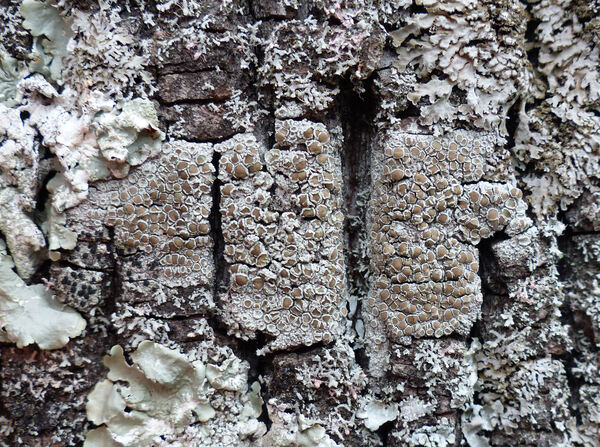

Andrea Moro; Owner: Department of Life Sciences, University of Trieste
Italy, Friuli Venezia Giulia, Trieste, Trieste, Opicina, Viale alberato sulla strada per Monrupino
17/02/2017


Andrea Moro; Owner: Department of Life Sciences, University of Trieste
Italy, Friuli Venezia Giulia, Trieste, Trieste, Opicina, Viale alberato sulla strada per Monrupino
17/02/2017
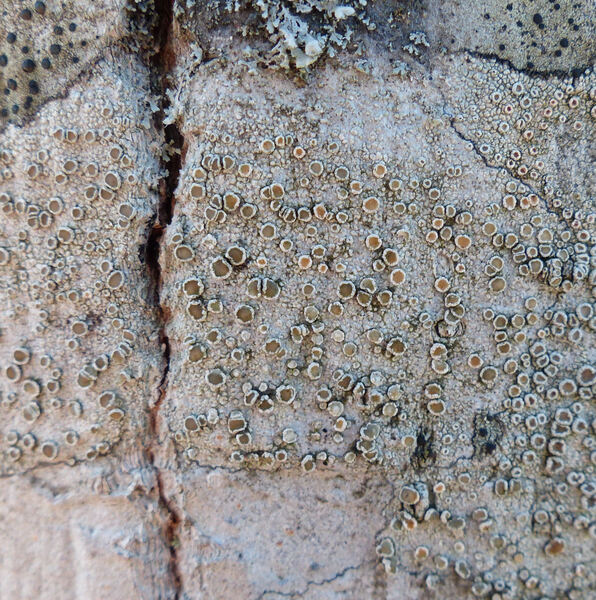

Andrea Moro; Owner: Department of Life Sciences, University of Triedte
Italy, Friuli Venezia Giulia, Trieste, Trieste Karst, Rocca di Monrupino
20/02/2017
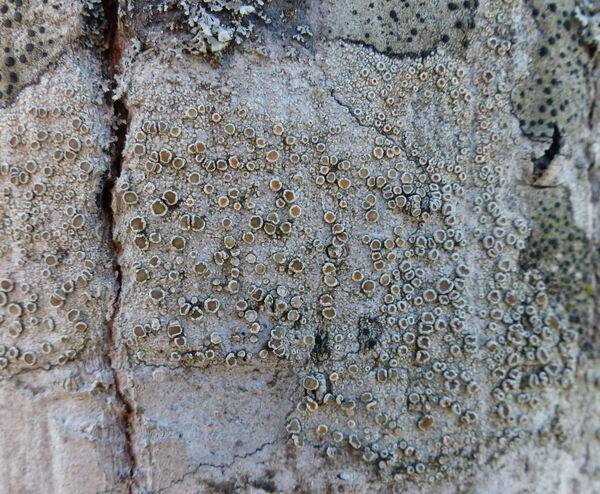

Andrea Moro; Owner: Department of Life Sciences, University of Triedte
Italy, Friuli Venezia Giulia, Trieste, Trieste Karst, Rocca di Monrupino
20/02/2017
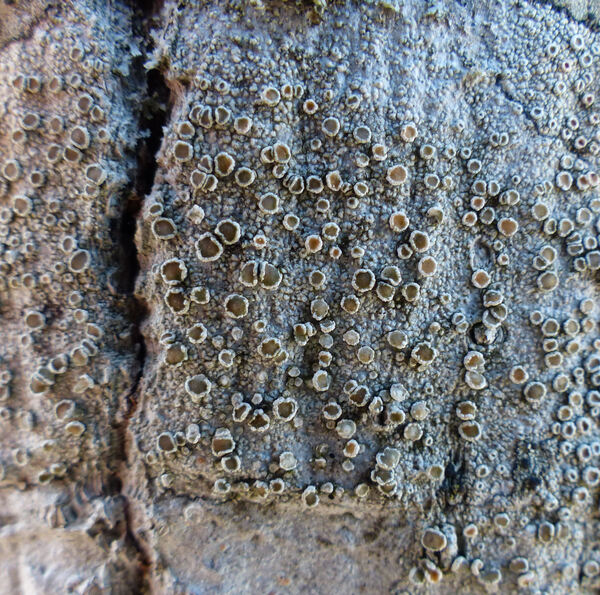

Andrea Moro; Owner: Department of Life Sciences, University of Triedte
Italy, Friuli Venezia Giulia, Trieste, Trieste Karst, Rocca di Monrupino
20/02/2017
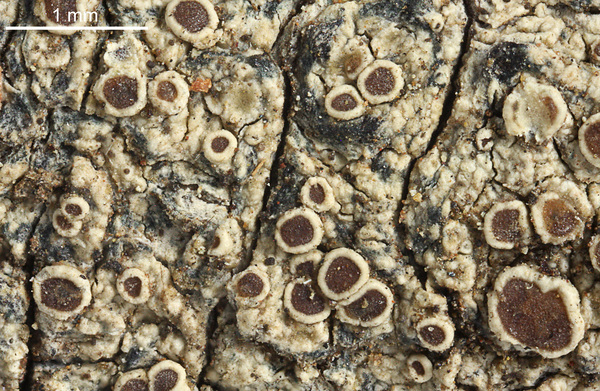

Felix Schumm – CC BY-SA 4.0
[11505], Portugal, Madeira, südlich von Porto da Cruz bei Portela, im Lorbeerwald am Anfang der Levada zwischen Portela und Laceimeiros; 32°45' N, 16°50' W, 630 m. Leg et det. Schumm 28.12.2003.


Felix Schumm – CC BY-SA 4.0
[11505], Portugal, Madeira, südlich von Porto da Cruz bei Portela, im Lorbeerwald am Anfang der Levada zwischen Portela und Laceimeiros; 32°45' N, 16°50' W, 630 m. Leg et det. Schumm 28.12.2003.


Felix Schumm – CC BY-SA 4.0
[11505], Portugal, Madeira, südlich von Porto da Cruz bei Portela, im Lorbeerwald am Anfang der Levada zwischen Portela und Laceimeiros; 32°45' N, 16°50' W, 630 m. Leg et det. Schumm 28.12.2003.
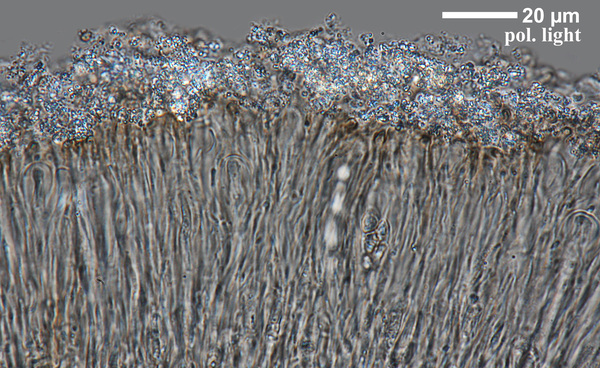

Felix Schumm – CC BY-SA 4.0
[11505], Portugal, Madeira, südlich von Porto da Cruz bei Portela, im Lorbeerwald am Anfang der Levada zwischen Portela und Laceimeiros; 32°45' N, 16°50' W, 630 m. Leg et det. Schumm 28.12.2003.
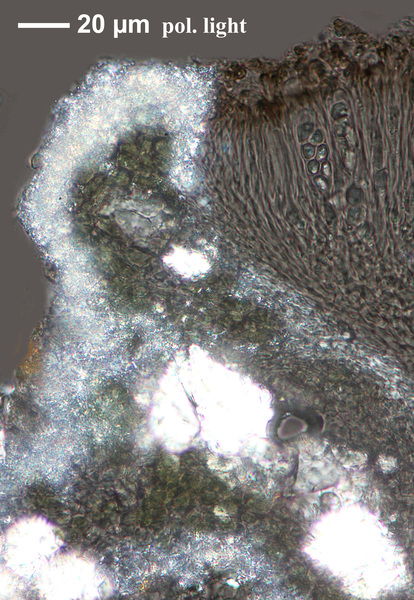

Felix Schumm – CC BY-SA 4.0
[11505], Portugal, Madeira, südlich von Porto da Cruz bei Portela, im Lorbeerwald am Anfang der Levada zwischen Portela und Laceimeiros; 32°45' N, 16°50' W, 630 m. Leg et det. Schumm 28.12.2003.
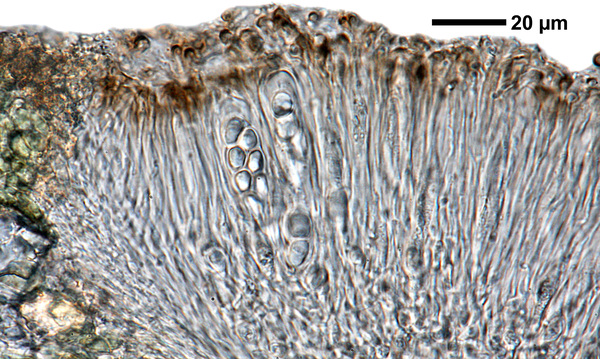

Felix Schumm – CC BY-SA 4.0
[11505], Portugal, Madeira, südlich von Porto da Cruz bei Portela, im Lorbeerwald am Anfang der Levada zwischen Portela und Laceimeiros; 32°45' N, 16°50' W, 630 m. Leg et det. Schumm 28.12.2003.


Felix Schumm – CC BY-SA 4.0
[11505], Portugal, Madeira, südlich von Porto da Cruz bei Portela, im Lorbeerwald am Anfang der Levada zwischen Portela und Laceimeiros; 32°45' N, 16°50' W, 630 m. Leg et det. Schumm 28.12.2003.
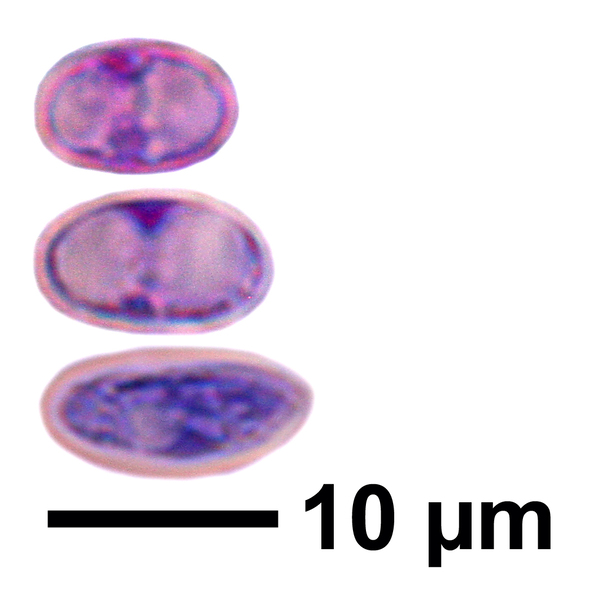

Felix Schumm – CC BY-SA 4.0
[11505], Portugal, Madeira, südlich von Porto da Cruz bei Portela, im Lorbeerwald am Anfang der Levada zwischen Portela und Laceimeiros; 32°45' N, 16°50' W, 630 m. Leg et det. Schumm 28.12.2003.


Felix Schumm – CC BY-SA 4.0
[11505], Portugal, Madeira, südlich von Porto da Cruz bei Portela, im Lorbeerwald am Anfang der Levada zwischen Portela und Laceimeiros; 32°45' N, 16°50' W, 630 m. Leg et det. Schumm 28.12.2003.
at: atranorin, ga: gangaleoidin
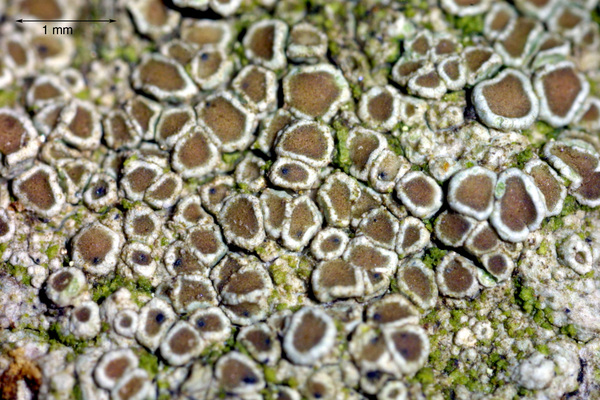

Felix Schumm – CC BY-SA 4.0
[12300], Griechenland, N-Samos, bei Manolates südlich von Agios Konstandinos, 37°47.185'N, 26°49.533'E, 341 m; an Laubbaum. Leg. Schumm 02.05.2006, det. Schumm 2006.
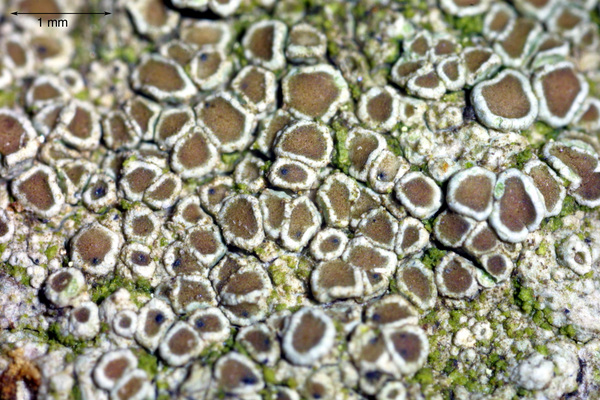

Felix Schumm – CC BY-SA 4.0
[12300], Griechenland, N-Samos, bei Manolates südlich von Agios Konstandinos, 37°47.185'N, 26°49.533'E, 341 m; an Laubbaum. Leg. Schumm 02.05.2006, det. Schumm 2006.
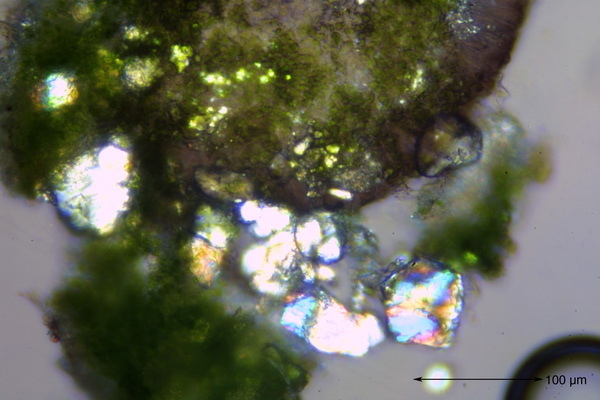

Felix Schumm – CC BY-SA 4.0
[12300], Griechenland, N-Samos, bei Manolates südlich von Agios Konstandinos, 37°47.185'N, 26°49.533'E, 341 m; an Laubbaum. Leg. Schumm 02.05.2006, det. Schumm 2006.
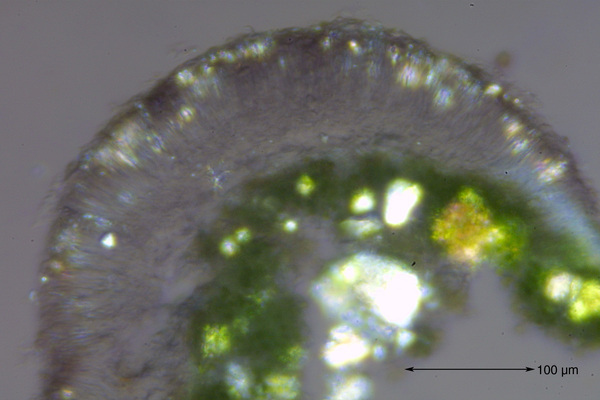

Felix Schumm – CC BY-SA 4.0
[12300], Griechenland, N-Samos, bei Manolates südlich von Agios Konstandinos, 37°47.185'N, 26°49.533'E, 341 m; an Laubbaum. Leg. Schumm 02.05.2006, det. Schumm 2006.
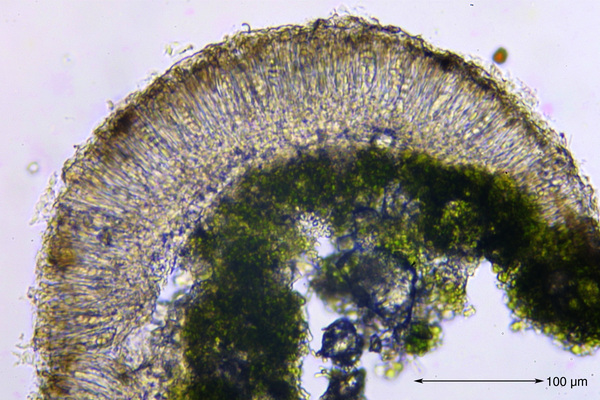

Felix Schumm – CC BY-SA 4.0
[12300], Griechenland, N-Samos, bei Manolates südlich von Agios Konstandinos, 37°47.185'N, 26°49.533'E, 341 m; an Laubbaum. Leg. Schumm 02.05.2006, det. Schumm 2006.


Felix Schumm – CC BY-SA 4.0
[12300], Griechenland, N-Samos, bei Manolates südlich von Agios Konstandinos, 37°47.185'N, 26°49.533'E, 341 m; an Laubbaum. Leg. Schumm 02.05.2006, det. Schumm 2006.


Felix Schumm – CC BY-SA 4.0
[12300], Griechenland, N-Samos, bei Manolates südlich von Agios Konstandinos, 37°47.185'N, 26°49.533'E, 341 m; an Laubbaum. Leg. Schumm 02.05.2006, det. Schumm 2006.


Felix Schumm – CC BY-SA 4.0
[12300], Griechenland, N-Samos, bei Manolates südlich von Agios Konstandinos, 37°47.185'N, 26°49.533'E, 341 m; an Laubbaum. Leg. Schumm 02.05.2006, det. Schumm 2006.
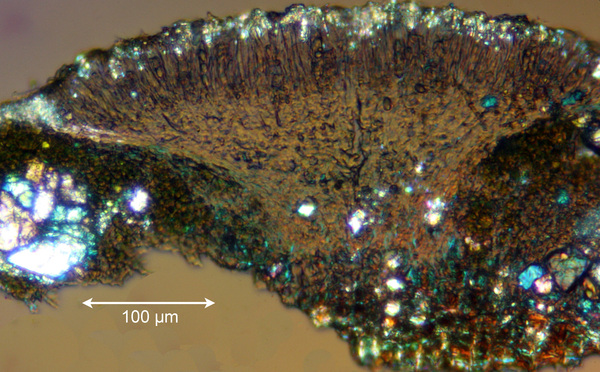

Felix Schumm – CC BY-SA 4.0
[12300], Griechenland, N-Samos, bei Manolates südlich von Agios Konstandinos, 37°47.185'N, 26°49.533'E, 341 m; an Laubbaum. Leg. Schumm 02.05.2006, det. Schumm 2006.
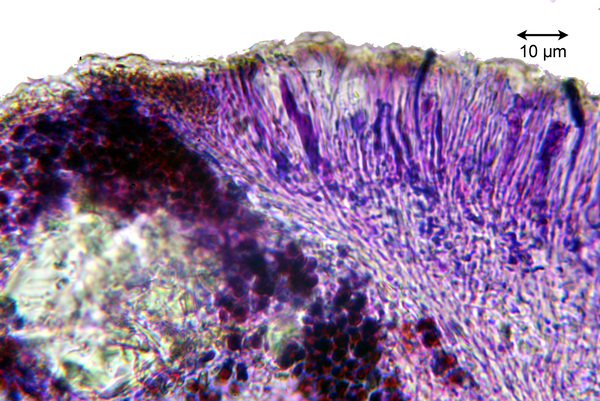

Felix Schumm – CC BY-SA 4.0
[12300], Griechenland, N-Samos, bei Manolates südlich von Agios Konstandinos, 37°47.185'N, 26°49.533'E, 341 m; an Laubbaum. Leg. Schumm 02.05.2006, det. Schumm 2006.


Felix Schumm – CC BY-SA 4.0
[12300], Griechenland, N-Samos, bei Manolates südlich von Agios Konstandinos, 37°47.185'N, 26°49.533'E, 341 m; an Laubbaum. Leg. Schumm 02.05.2006, det. Schumm 2006.
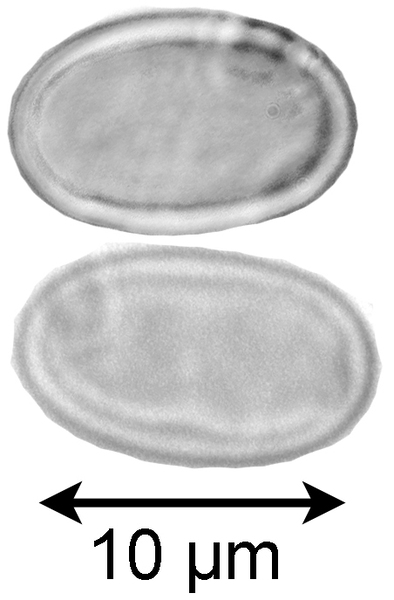

Felix Schumm – CC BY-SA 4.0
[12300], Griechenland, N-Samos, bei Manolates südlich von Agios Konstandinos, 37°47.185'N, 26°49.533'E, 341 m; an Laubbaum. Leg. Schumm 02.05.2006, det. Schumm 2006.
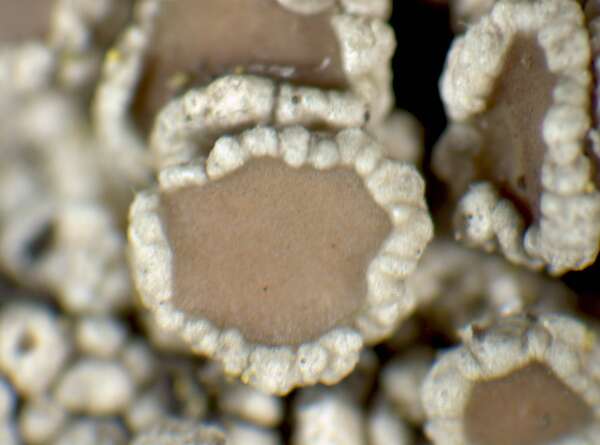

P.L. Nimis; Owner: Department of Life Sciences, University of Trieste
Herbarium: TSB (34324)
2001/12/24
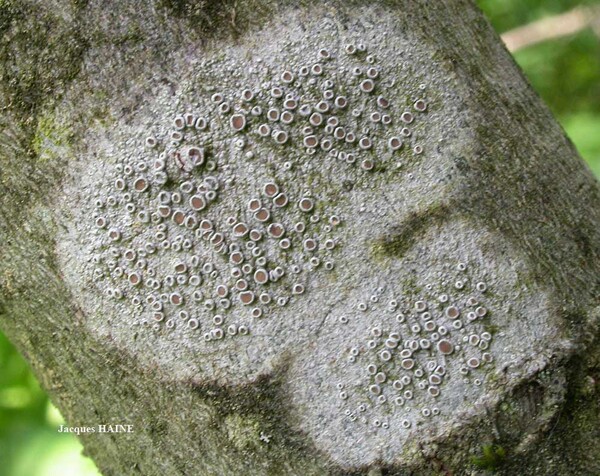
Jacques Haine - Source: http://www.lichensmaritimes.org/index.php?task=fiche&lichen=457&lang=en
Belgium, Ardennes
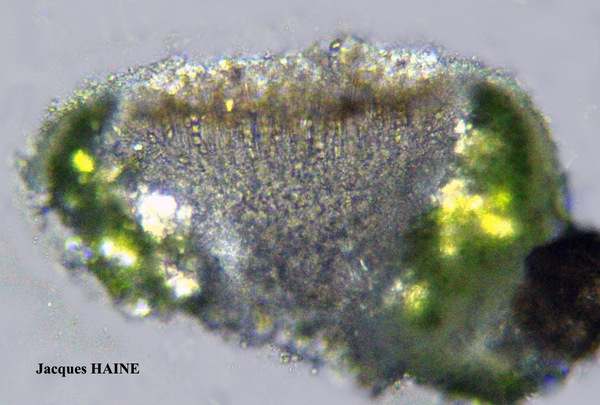
Jacques Haine - Source: http://www.lichensmaritimes.org/index.php?task=fiche&lichen=457&lang=en
Belgium, Ardennes
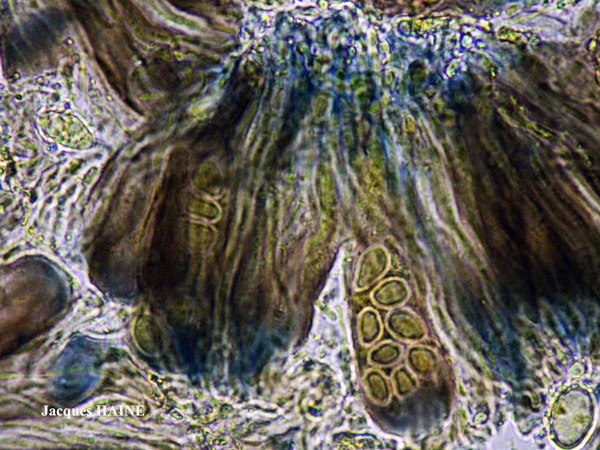
Jacques Haine - Source: http://www.lichensmaritimes.org/index.php?task=fiche&lichen=457&lang=en
Belgium, Ardennes
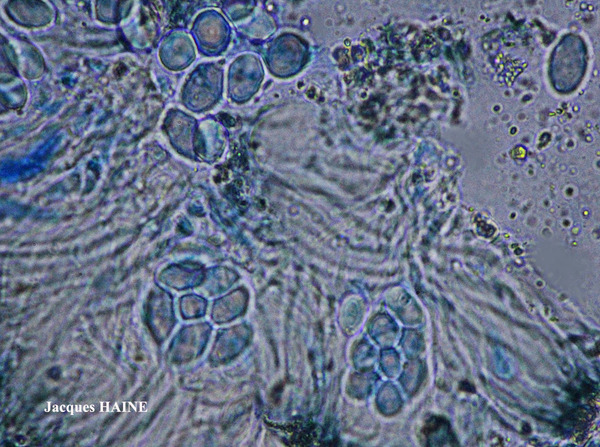
Jacques Haine - Source: http://www.lichensmaritimes.org/index.php?task=fiche&lichen=457&lang=en
Belgium, Ardennes
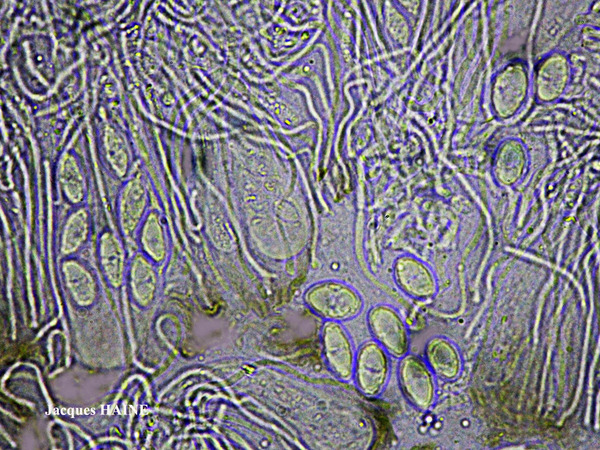
Jacques Haine - Source: http://www.lichensmaritimes.org/index.php?task=fiche&lichen=457&lang=en
Belgium, Ardennes
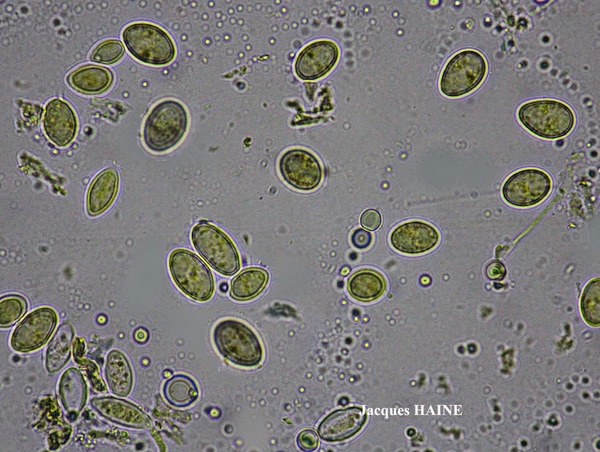
Jacques Haine - Source: http://www.lichensmaritimes.org/index.php?task=fiche&lichen=457&lang=en
Belgium, Ardennes

Bernard Bouffinier - Source: http://www.lichensmaritimes.org/index.php?task=fiche&lichen=1071&lang=en
France, Châteaulin
f. rugosella
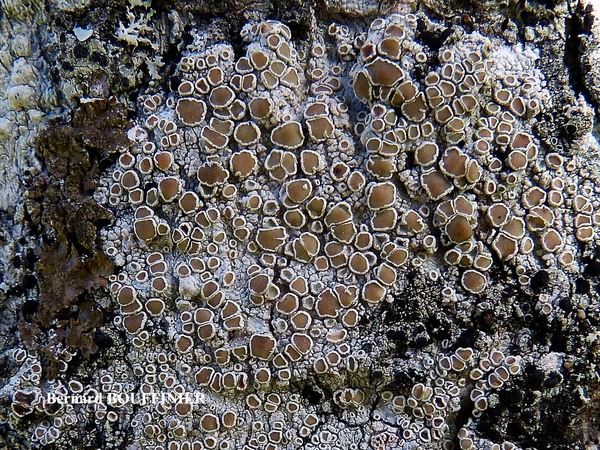
Bernard Bouffinier - Source: http://www.lichensmaritimes.org/index.php?task=fiche&lichen=1071&lang=en
France, Le Fret
f. rugosella
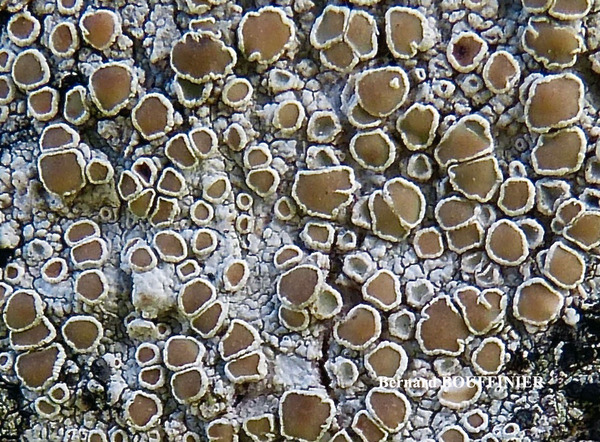
Bernard Bouffinier - Source: http://www.lichensmaritimes.org/index.php?task=fiche&lichen=1071&lang=en
France, Le Fret
f. rugosella
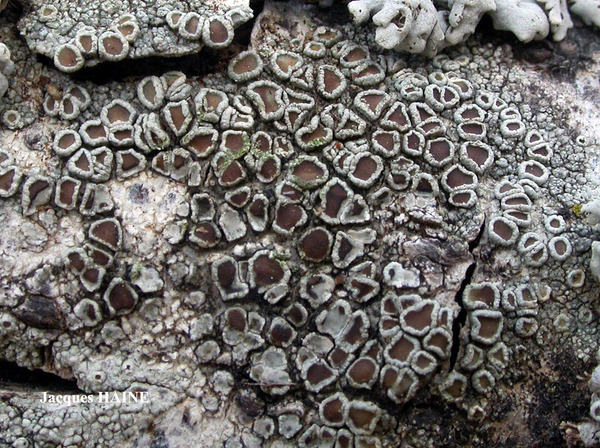
Bernard Bouffinier - Source: http://www.lichensmaritimes.org/index.php?task=fiche&lichen=1071&lang=en
Belgium, Cerfontaine
f. rugosella
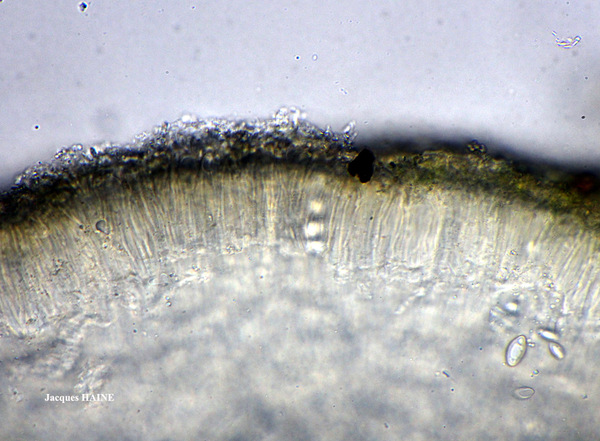
Bernard Bouffinier - Source: http://www.lichensmaritimes.org/index.php?task=fiche&lichen=1071&lang=en
Belgium, Argol
f. rugosella
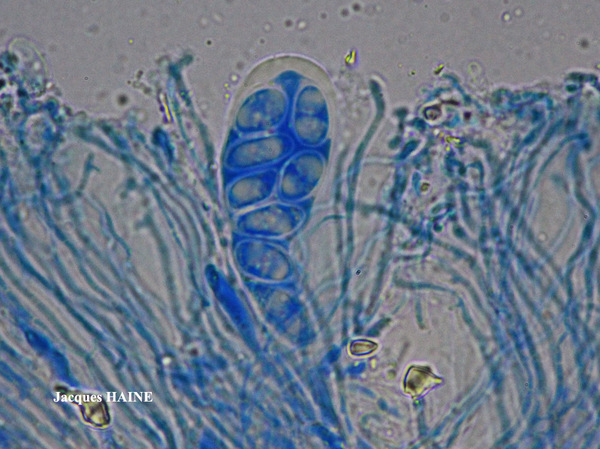
Bernard Bouffinier - Source: http://www.lichensmaritimes.org/index.php?task=fiche&lichen=1071&lang=en
Belgium, Argol
f. rugosella
Growth form: Crustose
Substrata: bark
Photobiont: green algae other than Trentepohlia
Reproductive strategy: mainly sexual
Pioneer species
Commonnes-rarity: (info)
Alpine belt: absent
Subalpine belt: very rare
Oromediterranean belt: absent
Montane belt: common
Submediterranean belt: extremely common
Padanian area: rather common
Humid submediterranean belt: extremely common
Humid mediterranean belt: extremely common
Dry mediterranean belt: very common

Predictive model
| Herbarium samples |


Andrea Moro; Owner: Department of Life Sciences, University of Trieste
Italy, Friuli Venezia Giulia, Trieste, Trieste, Opicina, Viale alberato sulla strada per Monrupino
17/02/2017


Andrea Moro; Owner: Department of Life Sciences, University of Trieste
Italy, Friuli Venezia Giulia, Trieste, Trieste, Opicina, Viale alberato sulla strada per Monrupino
17/02/2017


Andrea Moro; Owner: Department of Life Sciences, University of Triedte
Italy, Friuli Venezia Giulia, Trieste, Trieste Karst, Rocca di Monrupino
20/02/2017


Andrea Moro; Owner: Department of Life Sciences, University of Triedte
Italy, Friuli Venezia Giulia, Trieste, Trieste Karst, Rocca di Monrupino
20/02/2017


Andrea Moro; Owner: Department of Life Sciences, University of Triedte
Italy, Friuli Venezia Giulia, Trieste, Trieste Karst, Rocca di Monrupino
20/02/2017


Felix Schumm – CC BY-SA 4.0
[11505], Portugal, Madeira, südlich von Porto da Cruz bei Portela, im Lorbeerwald am Anfang der Levada zwischen Portela und Laceimeiros; 32°45' N, 16°50' W, 630 m. Leg et det. Schumm 28.12.2003.


Felix Schumm – CC BY-SA 4.0
[11505], Portugal, Madeira, südlich von Porto da Cruz bei Portela, im Lorbeerwald am Anfang der Levada zwischen Portela und Laceimeiros; 32°45' N, 16°50' W, 630 m. Leg et det. Schumm 28.12.2003.


Felix Schumm – CC BY-SA 4.0
[11505], Portugal, Madeira, südlich von Porto da Cruz bei Portela, im Lorbeerwald am Anfang der Levada zwischen Portela und Laceimeiros; 32°45' N, 16°50' W, 630 m. Leg et det. Schumm 28.12.2003.


Felix Schumm – CC BY-SA 4.0
[11505], Portugal, Madeira, südlich von Porto da Cruz bei Portela, im Lorbeerwald am Anfang der Levada zwischen Portela und Laceimeiros; 32°45' N, 16°50' W, 630 m. Leg et det. Schumm 28.12.2003.


Felix Schumm – CC BY-SA 4.0
[11505], Portugal, Madeira, südlich von Porto da Cruz bei Portela, im Lorbeerwald am Anfang der Levada zwischen Portela und Laceimeiros; 32°45' N, 16°50' W, 630 m. Leg et det. Schumm 28.12.2003.


Felix Schumm – CC BY-SA 4.0
[11505], Portugal, Madeira, südlich von Porto da Cruz bei Portela, im Lorbeerwald am Anfang der Levada zwischen Portela und Laceimeiros; 32°45' N, 16°50' W, 630 m. Leg et det. Schumm 28.12.2003.


Felix Schumm – CC BY-SA 4.0
[11505], Portugal, Madeira, südlich von Porto da Cruz bei Portela, im Lorbeerwald am Anfang der Levada zwischen Portela und Laceimeiros; 32°45' N, 16°50' W, 630 m. Leg et det. Schumm 28.12.2003.


Felix Schumm – CC BY-SA 4.0
[11505], Portugal, Madeira, südlich von Porto da Cruz bei Portela, im Lorbeerwald am Anfang der Levada zwischen Portela und Laceimeiros; 32°45' N, 16°50' W, 630 m. Leg et det. Schumm 28.12.2003.


Felix Schumm – CC BY-SA 4.0
[11505], Portugal, Madeira, südlich von Porto da Cruz bei Portela, im Lorbeerwald am Anfang der Levada zwischen Portela und Laceimeiros; 32°45' N, 16°50' W, 630 m. Leg et det. Schumm 28.12.2003.
at: atranorin, ga: gangaleoidin


Felix Schumm – CC BY-SA 4.0
[12300], Griechenland, N-Samos, bei Manolates südlich von Agios Konstandinos, 37°47.185'N, 26°49.533'E, 341 m; an Laubbaum. Leg. Schumm 02.05.2006, det. Schumm 2006.


Felix Schumm – CC BY-SA 4.0
[12300], Griechenland, N-Samos, bei Manolates südlich von Agios Konstandinos, 37°47.185'N, 26°49.533'E, 341 m; an Laubbaum. Leg. Schumm 02.05.2006, det. Schumm 2006.


Felix Schumm – CC BY-SA 4.0
[12300], Griechenland, N-Samos, bei Manolates südlich von Agios Konstandinos, 37°47.185'N, 26°49.533'E, 341 m; an Laubbaum. Leg. Schumm 02.05.2006, det. Schumm 2006.


Felix Schumm – CC BY-SA 4.0
[12300], Griechenland, N-Samos, bei Manolates südlich von Agios Konstandinos, 37°47.185'N, 26°49.533'E, 341 m; an Laubbaum. Leg. Schumm 02.05.2006, det. Schumm 2006.


Felix Schumm – CC BY-SA 4.0
[12300], Griechenland, N-Samos, bei Manolates südlich von Agios Konstandinos, 37°47.185'N, 26°49.533'E, 341 m; an Laubbaum. Leg. Schumm 02.05.2006, det. Schumm 2006.


Felix Schumm – CC BY-SA 4.0
[12300], Griechenland, N-Samos, bei Manolates südlich von Agios Konstandinos, 37°47.185'N, 26°49.533'E, 341 m; an Laubbaum. Leg. Schumm 02.05.2006, det. Schumm 2006.


Felix Schumm – CC BY-SA 4.0
[12300], Griechenland, N-Samos, bei Manolates südlich von Agios Konstandinos, 37°47.185'N, 26°49.533'E, 341 m; an Laubbaum. Leg. Schumm 02.05.2006, det. Schumm 2006.


Felix Schumm – CC BY-SA 4.0
[12300], Griechenland, N-Samos, bei Manolates südlich von Agios Konstandinos, 37°47.185'N, 26°49.533'E, 341 m; an Laubbaum. Leg. Schumm 02.05.2006, det. Schumm 2006.


Felix Schumm – CC BY-SA 4.0
[12300], Griechenland, N-Samos, bei Manolates südlich von Agios Konstandinos, 37°47.185'N, 26°49.533'E, 341 m; an Laubbaum. Leg. Schumm 02.05.2006, det. Schumm 2006.


Felix Schumm – CC BY-SA 4.0
[12300], Griechenland, N-Samos, bei Manolates südlich von Agios Konstandinos, 37°47.185'N, 26°49.533'E, 341 m; an Laubbaum. Leg. Schumm 02.05.2006, det. Schumm 2006.


Felix Schumm – CC BY-SA 4.0
[12300], Griechenland, N-Samos, bei Manolates südlich von Agios Konstandinos, 37°47.185'N, 26°49.533'E, 341 m; an Laubbaum. Leg. Schumm 02.05.2006, det. Schumm 2006.


Felix Schumm – CC BY-SA 4.0
[12300], Griechenland, N-Samos, bei Manolates südlich von Agios Konstandinos, 37°47.185'N, 26°49.533'E, 341 m; an Laubbaum. Leg. Schumm 02.05.2006, det. Schumm 2006.


P.L. Nimis; Owner: Department of Life Sciences, University of Trieste
Herbarium: TSB (34324)
2001/12/24

Jacques Haine - Source: http://www.lichensmaritimes.org/index.php?task=fiche&lichen=457&lang=en
Belgium, Ardennes

Jacques Haine - Source: http://www.lichensmaritimes.org/index.php?task=fiche&lichen=457&lang=en
Belgium, Ardennes

Jacques Haine - Source: http://www.lichensmaritimes.org/index.php?task=fiche&lichen=457&lang=en
Belgium, Ardennes

Jacques Haine - Source: http://www.lichensmaritimes.org/index.php?task=fiche&lichen=457&lang=en
Belgium, Ardennes

Jacques Haine - Source: http://www.lichensmaritimes.org/index.php?task=fiche&lichen=457&lang=en
Belgium, Ardennes

Jacques Haine - Source: http://www.lichensmaritimes.org/index.php?task=fiche&lichen=457&lang=en
Belgium, Ardennes

Bernard Bouffinier - Source: http://www.lichensmaritimes.org/index.php?task=fiche&lichen=1071&lang=en
France, Châteaulin
f. rugosella

Bernard Bouffinier - Source: http://www.lichensmaritimes.org/index.php?task=fiche&lichen=1071&lang=en
France, Le Fret
f. rugosella

Bernard Bouffinier - Source: http://www.lichensmaritimes.org/index.php?task=fiche&lichen=1071&lang=en
France, Le Fret
f. rugosella

Bernard Bouffinier - Source: http://www.lichensmaritimes.org/index.php?task=fiche&lichen=1071&lang=en
Belgium, Cerfontaine
f. rugosella

Bernard Bouffinier - Source: http://www.lichensmaritimes.org/index.php?task=fiche&lichen=1071&lang=en
Belgium, Argol
f. rugosella

 DOLICHENS
DOLICHENS
